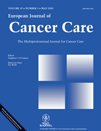Medication errors in chemotherapy: incidence, types and involvement of patients in prevention. A review of the literature
Financial support for this study was provided by a research grant from oncosuisse (OCS – 02109-08-2007). The funding source had no influence on study design; in the collection, analysis and interpretation of the data; in the writing of the manuscript; and in the decision to submit the manuscript for publication. The views expressed and any errors or omissions are the sole responsibility of the authors.
Abstract
SCHWAPPACH D.L.B. & WERNLI M. (2010) European Journal of Cancer Care19, 285–292Medication errors in chemotherapy: incidence, types and involvement of patients in prevention. A review of the literature
Medication errors in chemotherapy occur frequently and have a high potential to cause considerable harm. The objective of this article is to review the literature of medication errors in chemotherapy, their incidences and characteristics, and to report on the growing evidence on involvement of patients in error prevention. Among all medication errors and adverse drug events, administration errors are common. Current developments in oncology, namely, increased outpatient treatment at ambulatory infusion units and the diffusion of oral chemotherapy to the outpatient setting, are likely to increase hazards since the process of preparing and administering the drug is often delegated to patients or their caregivers. While professional activities to error incidence reduction are effective and important, it has been increasingly acknowledged that patients often observe errors in the administration of drugs and can thus be a valuable resource in error prevention. However, patients need appropriate information, motivation and encouragement to act as ‘vigilant partners’. Examples of simple strategies to involve patients in their safety are presented. Evidence indicates that high self-efficacy and perceived effectiveness of the specific preventive actions increase likelihood of participation in error prevention. Clinicians play a crucial role in supporting and enabling the chemotherapy patient in approaching errors.




